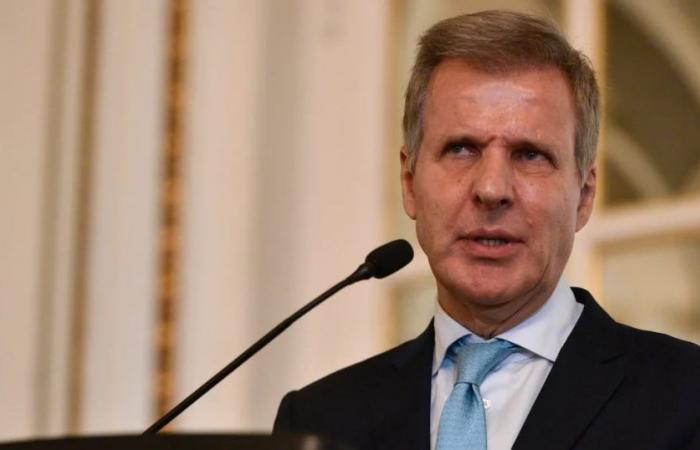The economist and former president of the Central Bank Martin Redrado He warned that in order for the economy to grow again, it is essential to lift the exchange rate restrictions, although he also acknowledged that it is not possible to do so immediately, because there are not enough dollars. What can be done, he said, is for the Central Bank and the National Securities Commission to design a “sequence” for lifting the restrictions and, week by week, to lift them, in order to build expectations about the future of the economy.
What the Minister of Economy proposed on Friday night, Luis Caputoand the current head of the Central Bank, Santiago Bausili, Redrado explained, is to continue cleaning the Central Bank’s balance sheet through an exchange of the debt it has with the banking system for a Treasury bond (that is, from the Ministry of Economy.
“What is being offered for Monday is an exchange of a BCRA debt with the banks that has its origin in the budget deficit originated in the previous government’s policy of spending and passing the debt on to the next one,” explained the economist, who during week he was awarded an Honoris Causa Doctorate from the University of La Matanza, under the auspices of former minister José María Dagnino Pastore and capital market expert Claudio Zuchovicki.
What Caputo and Bausili announced, Redrado explained in an interview on Radio Mitre, is a voluntary exchange of “passive repos” from the BCRA held by banks for $15 trillion (equivalent, at the official exchange rate, to more than USD 16 billion). The issue, Redrado explained, is that what will be offered to the banks is a “lower quality” debt (the Treasury, unlike the BCRA, has a history of defaults), so in order for the banks to accept it voluntarily, he recommended “generating incentives” so that the entities can transform that debt into new credit.
For example, Redrado suggested, the government could offer banks to reduce reserve requirements (money they cannot lend) from 45% to 20% of deposits, thus freeing up loanable capacity. The secret to the success of the measure, he explained, “is to transform that debt into credit to the private sector.”
However, Redrado’s most juicy ideas arose in relation to the lifting of the currency controls and the exchange rate policy.

Asked if the dollar is “behind,” he pointed out that “a path to smooth the stocks is necessary; “It is one of the most crucial issues that we expected yesterday.”
As a difficulty in doing so, Redrado pointed out that in the last three months the Central Bank practically did not add reserves. On March 31, he specified, gross reserves were USD 29 billion and net reserves were negative by USD 1.5 billion, and currently the respective values are USD 29.5 billion and – USD 900 million, a very small difference with respect to the situation a quarter ago.
“There is a lack of reserves; What I proposed is to get out of the stocks with a dynamic of lifting one by one the restrictions put in place in the last 3 or 4 years by the BCRA and the National Securities Commission (CNV), with a sequence to lift those restrictions.”
These restrictions, which make up the so-called “cepo,” he said, “are the main obstacle to investment.”
It is, he said, a vicious circle. Although Congress has just approved, within the Base Law, the “Regime of Incentives for Large Investments” (RIGI), abroad the main difficulty they see in investing in Argentina is knowing at what dollar price one can enter. What price can you get?
“It is the main issue to attack. You have to take regulation by regulation. I tell you one thing: if a company wants to pay past debt with CCL, it cannot operate for 90 days in the official exchange market,” said Redrado, who also suggested allowing a retiree “to buy (at the official price)” the 200 dollars that I bought before.”
Regarding the discussion about whether or not it is possible to lift the trap, as pointed out respectively by Ricardo López Murphy and Carlos Melconian, Redrado proposed an intermediate position: that Caputo and Bausili define a path so that there are fewer restrictions every day

“There is a factual reality: there are no dollars to immediately raise the issue. Extremes are not good. But a path can be proposed so that merchants and businessmen know where we are going.” In the current situation, he compared, “we are in day to day.”
Developing a path out of the stocks is key, he stressed, because the delay in leaving implies delaying the reactivation of the economy. “We are in a vicious circle and I propose moving to a virtuous one of stabilization, economic growth and a realistic exit from the stocks. To grow, Argentina needs consumption and investment to grow. And genuine dollars come from investments and exports,” he explained.
That is also why, he advised, it is necessary to reach trade agreements with countries with which Argentina has trade complementarity. As an example, he pointed to those from Central America, which “import everything” and Argentina “has conditions to be able to export.”
Redrado praised the government’s achievements, such as the balanced budget, and asked to “consolidate” it in laws, in addition to eliminating distorting taxes, such as those on work, in order to attack informality by increasing formal employment.
But he was very skeptical about the possibility of a “V” rebound in the economy. “As we are, the rebound is going to be in L. We have not yet hit the floor. There are no engines to have a V-shaped recovery,” he concluded.


